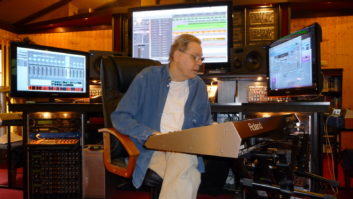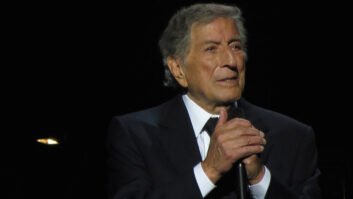Separately, Jimmie Dale Gilmore and Dave Alvin have forged their own paths while remaining closely rooted in Western folk music, Americana and rhythm and blues. Gilmore’s career has centered on his pioneering folk trio, The Flatlanders, and Alvin is known both as a solo artist and founder of punk-a-billy trailblazers The Blasters. While pursuing separate but parallel paths, the lifelong friends only recently discovered their musical chemistry while playing a handful of live performances just over a year ago. June 1 sees the release of their first album as a duo: Downey to Lubbock. Pro Sound News spoke to Alvin about preserving the magic of live performance in the studio and amalgamating musical synergies.
On embarking on a new journey:
We’ve known each other for 30 some years, but in that time, we’d never really played music together except for maybe a sing-along at the end of a show. There were things I knew about Jimmie musically that other people didn’t know, and I picked up these things over time—like the guy is a great blues singer. So this new project came up a little over a year ago in Texas at a gig Jimmie and I played with acoustic guitars. We were only about halfway through, and it sounded like we’d been playing together for years. After three or four gigs, we said, ‘Maybe we should record some of this!’ Our shows became absolutely freeform; we would start with a song or two that everyone knew, but after that, we were off to the races. I would pull out a song, then he would pull out a song, and we would go anywhere from Sam Cooke to Merle Haggard.
On choosing material:
There is a song on the new album called ‘Silverlake’ that was written by a mutual friend of ours, a great songwriter by the name of Steve Young who passed away about two years ago. We were originally going to do it as a tribute to Steve, but Jimmie just sings the living Hell out of it, so we had to cut that one. Steve had written a few hits for people and this was one of his best songs, but it had never really been recorded so it was an obvious choice for the record. While we were recording, we would do three different sets of sessions, kind of like we do in the live show. We cut an Elmore James tune, because Jimmie could sing the Hell out of Elmore James, too. Then the next day, I would bring in a song that I was working on. It was all a little like the live shows, yet at the same time, we didn’t know what we wanted to do.
On keeping it live and contemporary:
There is a certain ambience to a live studio recording and that’s what I was going for. I wanted the record to sound like we decided to record it just before we actually recorded it. My motto for recording is ‘Put a great mic in front of a great instrument in front of a great musician, and you’re covered.’ If you listen back to some hit record from the ’80s, ’90s or teens right now, there are certain sounds and they become archaic. There are certain types of keyboards and synths from the ’80s, for instance, that nobody would ever dream of putting on a record now, because it immediately typecasts it. But if you listen to ‘Kind of Blue’ by Miles Davis, that is timeless. It could have been cut last week by a new Jazz quartet. So I always try to go for what’s timeless. What can hold up in 10 years? In 10 years, this album will sound as contemporary in 10 years as it does now, if that makes any sense.
On ‘Billy the Kid and Geronimo’:
I was looking for songs we could both sing together, because neither one of us are great harmony singers; we are individualistic, and stylistically set in our ways. I had scraps and pieces of this song lying around and I thought, ‘I was a kid once, I could be Billy the Kid, and Jimmie has some native blood, he could be Geronimo!’ I have written a lot of mythic storytelling songs and usually when you write those, you write about four or five verses that are not needed so you go through the process of filtering those down. You don’t really need to know what color socks we were wearing. So I thought I would use a couple of classic western archetypes: Billy the Kid and Geronimo. Perhaps I painted Billy a little too bleakly and Geronimo a little too rose-colored, but I wanted to use the two myths and make some kind of comment on the way people are.
Exhibiting at the 2018 NAB Show? Enter the NewBay Best of Show Awards!
On creative mixing:
One of the beauties of digital is that you can mix as you go along. I’ve been involved in projects that have gone on way too long, and I could tell horror stories, but I enjoy mixing, and for someone who plays more older-style music, I think digital was just a psychological boost for me and going from tape to digital was totally liberating for me. You can get a mixing groove going while you are deciding whether or not we are going to use take four—our engineer Craig is great at that. By the end of a few days of recording, we have a vague idea of what the mix is going to be. And then you can get creative. I may have an idea of an arrangement, we track it and then, after repeated listenings, want to move things around. Mixing is always creative for the engineer, but now I view it as part of the creative process for me as a songwriter.







